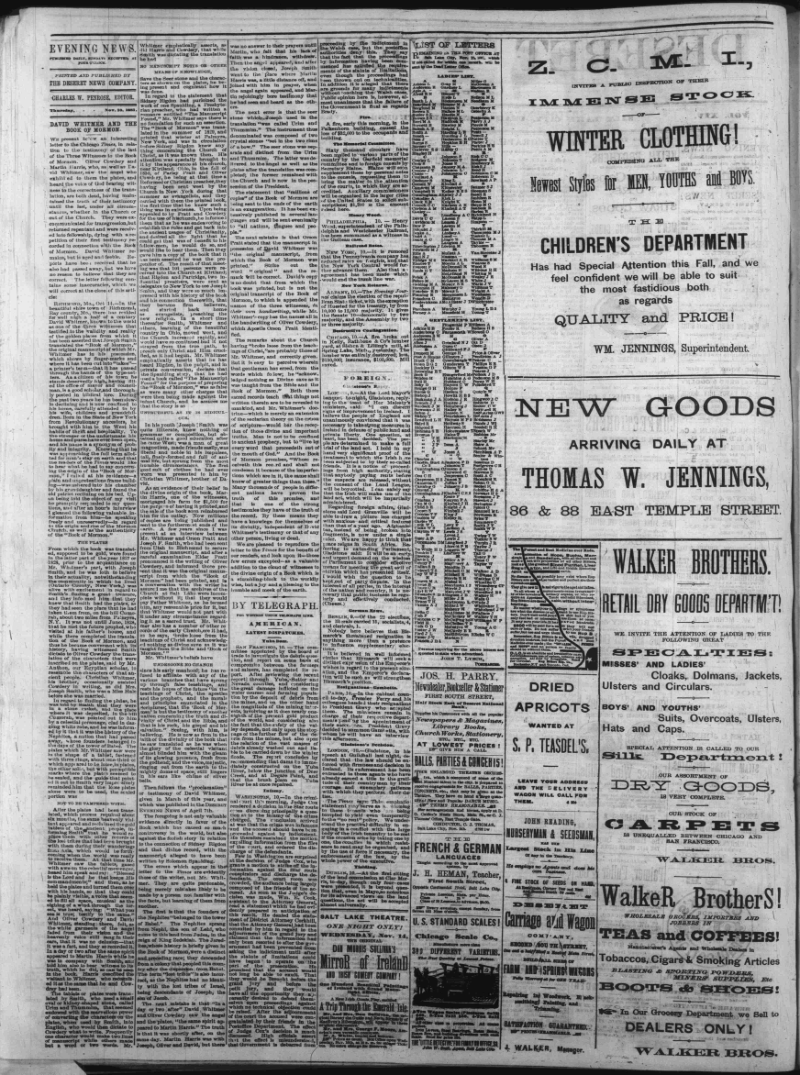David Whitmer said that Joseph used a small oval or kidney-shaped stone called the Urim and Thummim to translate the plates.
- Type
- News (traditional)
- Hearsay
- DirectLateJournalism
- Reference
"David Whitmer and the Book of Mormon," Deseret Evening News 14, no. 296 (November 11, 1881): 2
- Scribe/Publisher
- Deseret Evening News
- People
- Martin Harris, Emma Hale Smith, Charles Anthon, David Whitmer, Joseph Smith, Jr., Oliver Cowdery
- Audience
- General Public
- Transcription
It was not until June, 1828, that he met the future prophet, who visited at his father's house, and while there completed the translation of the Book of Mormon, and thus he became conversant with its history, having witnessed Smith dictate to Oliver Cowdery the translation of the characters that were transcribed on the plates, said by Mr. Anthon, our Egyptian scholar, to resemble the characters of that ancient people. Christian Whitmer, his brother, occasionally assisted Cowdery in writing, as did Mrs. Joseph Smith, who was a Miss Hale before she was married . . . The tablets or plates were translated by Smith, who used a small oval or kidney-shaped stone, called Urim and Thummim, that seemed endowed with the marvellous power of converting the characters on the plates, when used by Smith, into English, who would then dictate to Cowdery what to write. Frequently one character would make two lines of manuscript while others made but a word or two words. Mr. Whitmer emphatically asserts, as did Harris and Cowdery, that while Smith was dictating the translation he had NO MANUSCRIPT NOTES OR OTHER MEANS OF KNOWLEDGE Save the Seer stone and the characters as shown on the plates, he being present and cognizant how it was done.
- Citations in Mormonr Qnas
The B. H. Roberts Foundation is not owned by, operated by, or affiliated with the Church of Jesus Christ of Latter-day Saints.

